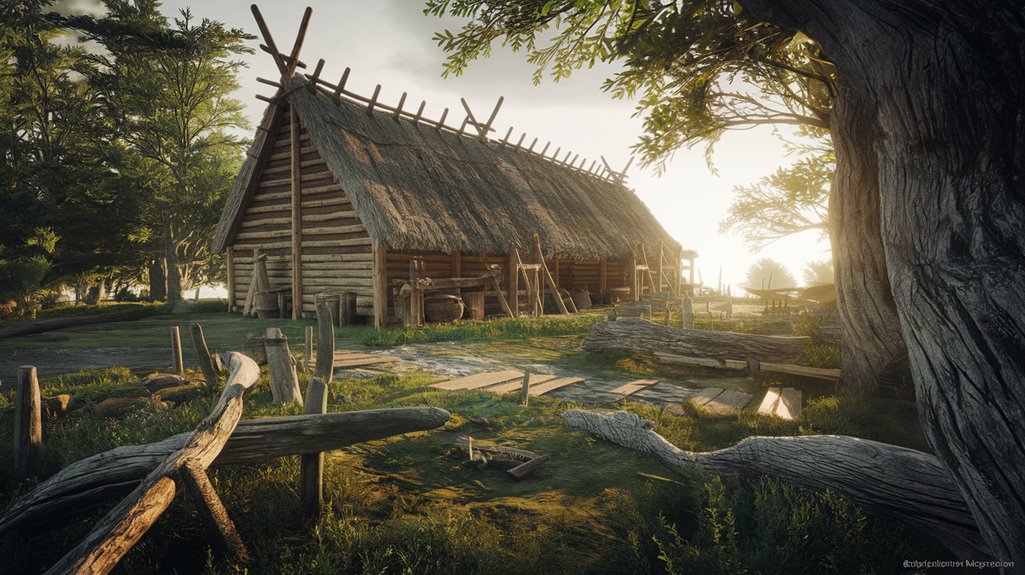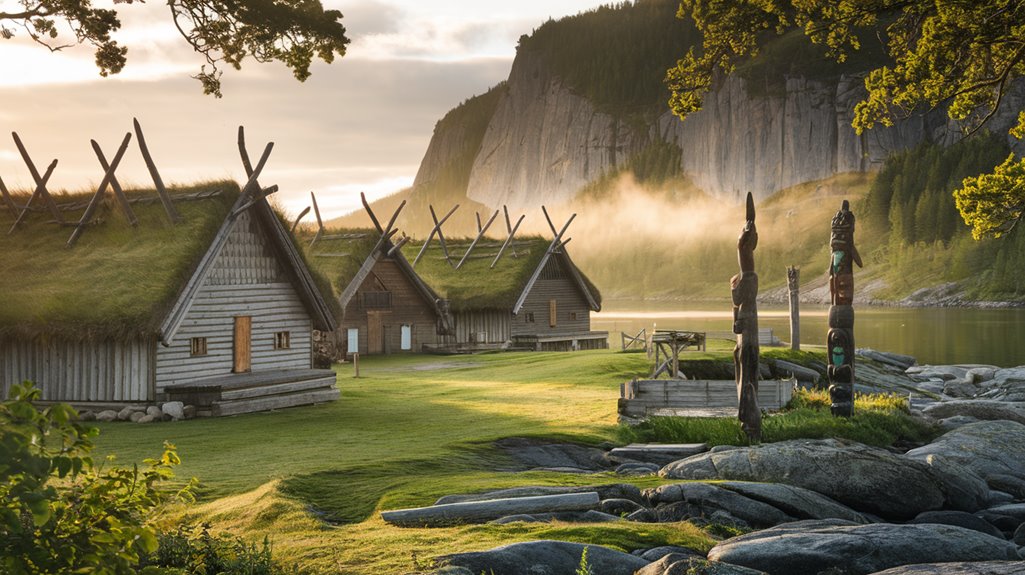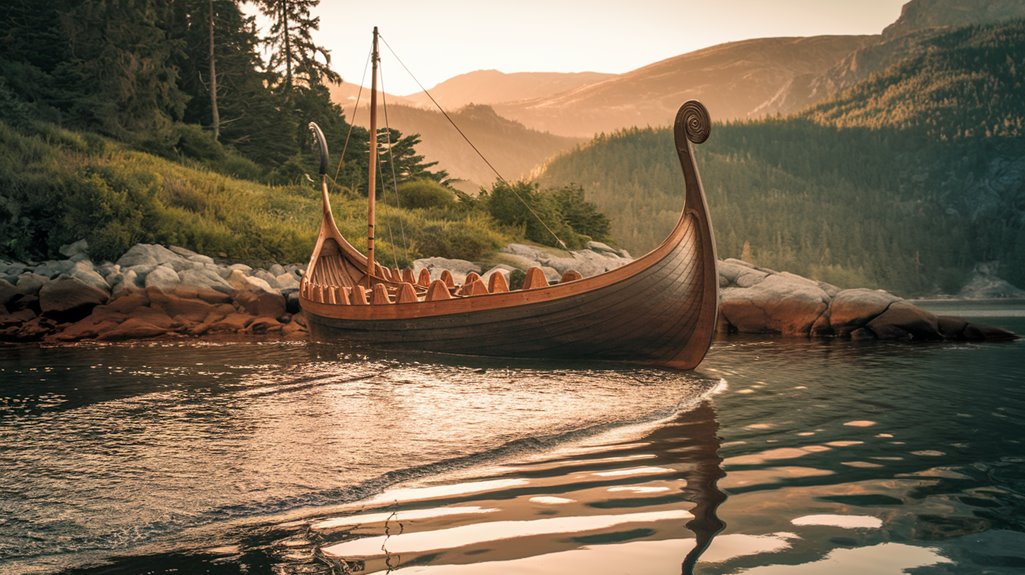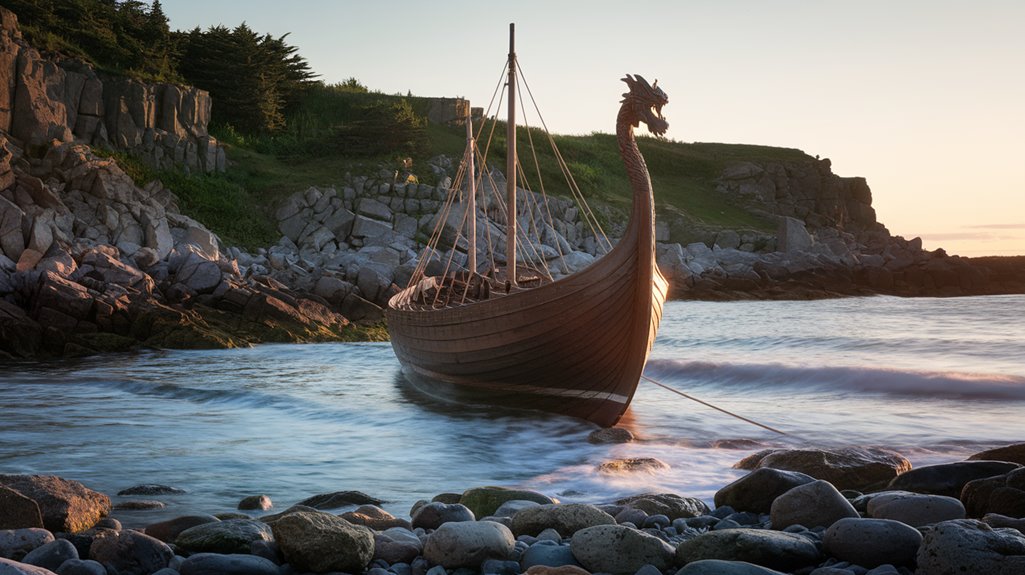Vikings Reached North America Before Columbus
You might think you know who first crossed the Atlantic to reach North America, but history tells a different story. While Columbus's 1492 voyage gets most of the attention, Norse explorers led by Leif Erikson made the journey nearly 500 years earlier. They didn't just reach the continent – they established settlements and traded with indigenous peoples, leaving behind archaeological evidence that's still studied today. This remarkable feat challenges everything we've traditionally learned about the discovery of the New World.
The Norse Discovery of Vinland

While many people credit Christopher Columbus with discovering the Americas, Norse Vikings reached North America nearly 500 years earlier around 1000 CE.
Led by the legendary Leif Erikson, these intrepid explorers established their presence in a region they named Vinland, meaning "Wine Land" due to the wild grapes they found there. Most Vikings who participated in the journey were actually skilled farmers, not raiders.
Unlike the romanticized tales of Norse mythology, Viking navigation proved remarkably accurate, enabling them to sail from Greenland to various locations including Newfoundland, the Gulf of St. Lawrence, and possibly as far as Baffin Island.
They established a settlement at L'Anse aux Meadows, housing 70-90 people. Though the settlement lasted less than a decade, it served as an essential base for exploration and trade. The settlers left behind evidence of their time there, including ship rivets and pins that helped archaeologists date the site to between 980-1020 CE.
The Vinland Sagas, written centuries later, preserve these remarkable journeys in vivid detail.
Archaeological Evidence at L'anse Aux Meadows
A remarkable archaeological site at L'Anse aux Meadows in Newfoundland provides concrete evidence of Viking settlement in North America.
Located at the tip of Newfoundland's Great Northern Peninsula, the site features eight timber-framed turf structures built in authentic Norse style, including three dwellings, a forge, and workshops. The site was first discovered by Helge and Anne Ingstad in 1960 after searching the North American coast for Norse settlements.
Radiocarbon dating shows the site was occupied during 990 to 1050 AD.
The settlement patterns here differ from typical Norse colonies, as you won't find any livestock enclosures or farming areas.
Instead, archaeologists have uncovered roughly 800 Norse artifacts that paint a picture of a specialized community. These include iron production materials, bronze pins, stone oil lamps, and women's tools like spindle whorls.
The discovery of walrus ivory and exotic woods suggests the Vikings traded with indigenous peoples.
Today, Parks Canada protects this 11th-century site, which represents the earliest confirmed European presence in North America.
The Viking Sagas: Written Records of North American Voyages
Medieval Norse literature offers a fascinating window into Viking exploration through two primary sagas: *Eiríks saga rauða* and *Grænlendinga saga*.
These texts detail voyages to a land called Vinland, which scholars believe was in North America. While saga authenticity remains debated, they provide vital insights into Norse expeditions around 1000 CE. Most of these narratives were recorded in manuscripts during the 13th and 14th centuries.
Through narrative analysis, you'll discover accounts of Bjarni Herjólfsson first sighting the continent, followed by Leif Erikson's successful landing. These expeditions demonstrate Norse sailors' remarkable seafaring prowess in crossing the Atlantic.
The sagas also describe Thorfinn Karlsefni's ambitious settlement attempt with over 100 colonists. You'll find detailed descriptions of encounters with indigenous peoples, called "Skraelingar," which ultimately ended in conflict.
Though written centuries after the events they describe, these sagas have gained credibility through archaeological discoveries, particularly at L'Anse aux Meadows.
Life in Norse Settlements
Situated at the northernmost tip of Newfoundland, L'Anse aux Meadows served as an essential Norse base camp rather than a permanent settlement.
You'd find evidence of Norse craftsmanship in the large halls and specialized workshops, where they repaired boats and worked with iron.
Maritime activities dominated life at the settlement, as shown by the numerous boat nails and rivets discovered.
You can see the Vikings' resourcefulness in their use of local materials – they gathered wood and nuts while producing iron on-site. One excavation revealed that only one smelt occurred at the settlement during its occupation.
Archaeological findings, including a bronze pin, stone oil lamp, and spindle whorl, paint a picture of their daily activities. Due to the short sailing season from Greenland, establishing more permanent settlements proved challenging.
Unlike their Greenland colonies, you won't find evidence of permanent housing, farmland, or burial grounds here.
Instead, the site mainly supported exploration and resource gathering between 990 and 1050 CE.
The Legacy of Viking Exploration

While the Vikings' time in North America was relatively brief, their legacy of exploration has left an indelible mark on history.
Their regular expeditions revealed that they established resource extraction routes to support their settlements.
You'll find their influence preserved not just in Norse mythology and stories, but in tangible archaeological evidence that confirms their remarkable achievements. Their discovery of North America, centuries before Columbus, demonstrates their exceptional seafaring abilities and pioneering spirit.
The Vikings' trade networks between North America and Greenland, particularly in timber resources, show they weren't just warriors but skilled merchants and settlers. Excavations at L'Anse aux Meadows have revealed that the Vikings constructed Norse-style sod buildings typical of their settlements.
 original Norse sagas, written in the 13th century, document these remarkable Viking expeditions.
original Norse sagas, written in the 13th century, document these remarkable Viking expeditions.
Viking trade networks were more extensive than previously thought. Their skilled navigation methods enabled them to traverse vast distances with remarkable precision. When you examine the archaeological evidence, you'll see they imported specific timber species from North America to Greenland, including hemlock and jack pine. These findings, supported by medieval Norse sagas and tree ring analysis, prove Vikings maintained regular contact with North America for centuries.
They didn't just discover the continent – they actively explored, settled, and extracted resources from it nearly 500 years before Columbus' arrival.










